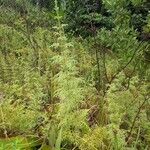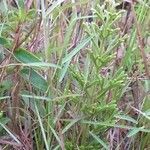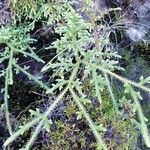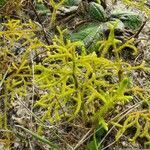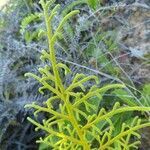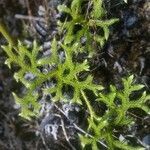A fern. A plant which lies along the ground. It has long branching stems covered with small scale like leaves. The stem trailing along the ground forms root clusters. Side branches are erect. The branch tips turn down and have small cones which develop spores.
